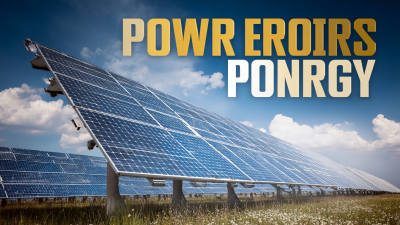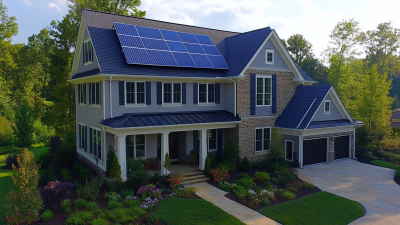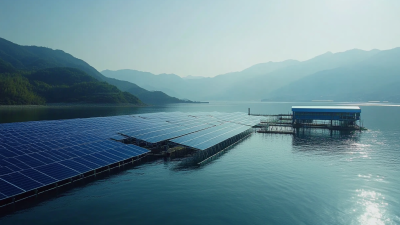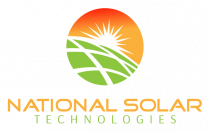Maximizing Your Savings with Innovative Residential Solar Systems Today
In today's evolving energy landscape, maximizing your savings through innovative residential solar systems has become increasingly paramount. According to the Solar Energy Industries Association (SEIA), the U.S. residential solar market has witnessed an unprecedented growth rate of over 20% annually, with over 3 million homes harnessing solar energy as of 2023. As homeowners seek to reduce their energy costs and carbon footprints, residential solar systems equipped with advanced technologies such as smart inverters and energy storage solutions are becoming essential. These cutting-edge installations not only provide substantial long-term savings—reportedly up to 70% on electricity bills—but also enhance property value, offering a return on investment that far exceeds traditional home upgrades. By leveraging these innovations, consumers can effectively navigate the transition to clean energy while optimizing their financial benefits.

Understanding the Basics of Residential Solar Systems
Residential solar systems have become increasingly popular as homeowners seek sustainable energy solutions and ways to cut utility costs. Understanding the basics of how these systems operate is crucial for anyone considering this investment. According to the U.S. Department of Energy, the average cost of residential solar systems has dropped by over 70% since 2010, making solar power more accessible to a wider range of consumers. This reduction has been driven by advancements in technology, increased production efficiency, and the expansion of government incentives.
A typical residential solar system consists of solar panels, an inverter, and mounting hardware. Solar panels convert sunlight into electricity, which is then transformed into usable energy by the inverter. Homeowners can often reduce their electricity bills by 50% to 90% by utilizing solar energy, depending on their location and the size of the system installed. Furthermore, a report from the National Renewable Energy Laboratory states that increasing the use of solar energy can significantly decrease dependence on fossil fuels, showcasing both the economic and environmental benefits of adopting residential solar systems today.
Exploring Different Types of Solar Panels for Home Use
When considering the adoption of solar energy for residential use, understanding the various types of solar panels available is crucial. The most common types include monocrystalline, polycrystalline, and thin-film solar panels, each offering distinct advantages.
 Monocrystalline panels, known for their sleek black aesthetics and high efficiency, typically deliver the best performance. They occupy less space, making them ideal for urban environments with limited roof area.
Monocrystalline panels, known for their sleek black aesthetics and high efficiency, typically deliver the best performance. They occupy less space, making them ideal for urban environments with limited roof area.
On the other hand, polycrystalline panels, characterized by their blue hue, are generally more affordable and slightly less efficient. They are a popular choice for homeowners seeking a balance between cost and performance. Lastly, thin-film solar panels, though less efficient, provide flexibility and lightweight options suitable for unconventional installations.
Exploring these types of solar panels helps homeowners maximize their savings while tapping into clean energy sources, making informed decisions that align with their energy needs and budgets.
Innovative Technologies Enhancing Solar Energy Efficiency
Innovative technologies in solar energy are transforming the landscape of residential energy solutions and making solar systems more efficient than ever. Recent breakthroughs, such as advancements in perovskite solar cells, have pushed the limits of panel efficiency to nearly 27%. These developments not only enhance the effectiveness of solar panels but also contribute to significant cost reductions. As a result, homeowners can now benefit from more affordable and effective solar energy systems than in previous years.
In addition to technological advancements in panel composition, innovative cleaning solutions have emerged to address common challenges faced by solar installations. For instance, in arid regions like Egypt, new technologies are being implemented to keep solar panels clean without the use of water or chemicals. This not only maintains the efficiency of solar panels but also simplifies maintenance, making solar energy a more attractive option for homeowners. As the demand for cleaner and more sustainable energy solutions grows, these innovations underscore the potential for residential solar systems to become a staple in energy efficiency efforts.
Financial Incentives and Savings from Installing Solar Systems
Installing innovative residential solar systems offers homeowners a remarkable opportunity to maximize their savings while contributing to a greener environment. One of the primary financial incentives for adopting solar energy is the availability of federal and state tax credits. For instance, in the United States, the Federal Solar Investment Tax Credit (ITC) allows homeowners to deduct a significant percentage of the cost of their solar system from their federal taxes, making initial investments much more manageable. Additionally, many states offer their own incentives, such as rebates or performance-based incentives, which further reduce the overall expenditure.

Apart from tax benefits, homeowners can also enjoy substantial savings on their monthly energy bills. By generating their own electricity, they can significantly lower their reliance on traditional utility providers. Many regions also have net metering programs, allowing homeowners to sell excess energy back to the grid, creating a potential source of income. Over time, the combination of reduced utility costs and financial incentives can lead to substantial savings, making solar systems not only an environmentally responsible choice but also a financially sound investment for the future.
The Future of Residential Solar: Trends and Developments
The future of residential solar systems is poised for significant growth and innovation, reflecting broader trends in the renewable energy sector. The global solar market is anticipated to surge from $25.69 billion in 2023 to an impressive $436.36 billion by 2032, driven by a compound annual growth rate (CAGR) of 6%. Specifically, the residential solar generator market is projected to reach $1.46 billion from 2024 to 2032, with an astonishing CAGR of 24.56%. This exceptional growth signifies a shift toward more sustainable home energy solutions as consumers increasingly prioritize energy independence and environmental responsibility.
Innovations in solar technology, such as organic solar cells and building-integrated photovoltaics (BIPV), are revolutionizing how we harness solar energy. The organic solar cell market alone is expected to expand from $227.74 million in 2024 to $3.39 billion by 2037, showcasing the potential for new materials and designs to enhance energy efficiency. Meanwhile, BIPV is projected to grow from $703.67 million in 2023 to over $2 billion by 2032. These advancements not only promise increased energy savings for homeowners but also reflect a larger trend towards diversifying solar applications, ensuring residential solar remains at the forefront of the renewable energy landscape.
Related Posts
-

How to Choose the Best Residential Solar Power Systems for Your Home
-

The Future of Best Commercial Solar Solutions for Sustainable Business Operations
-

Understanding the Problems with Choosing the Best Solar Power Energy Solutions
-

Unlock the Power of Solar Electric: Revolutionizing Sustainable Energy Solutions for Global Buyers
-

Revolutionizing Global Energy Markets with Solar Installations and Sustainable Solutions
-

Unlocking Sustainable Energy Solutions: The Future of Global Sourcing for Solar Panels

